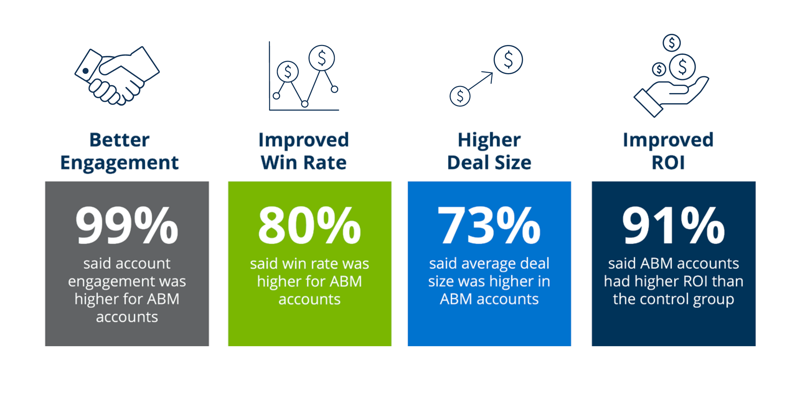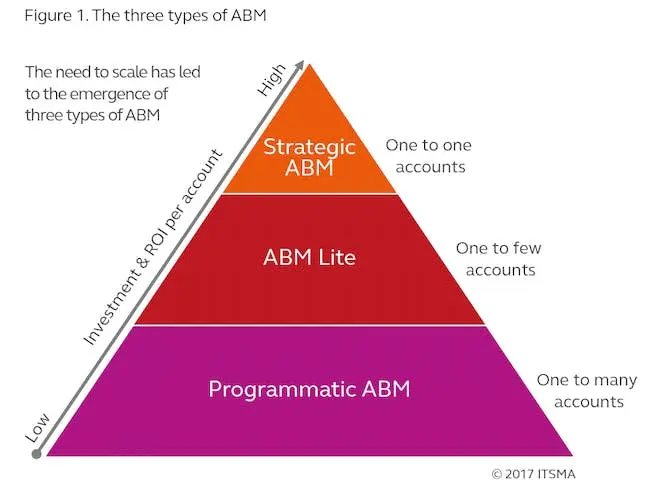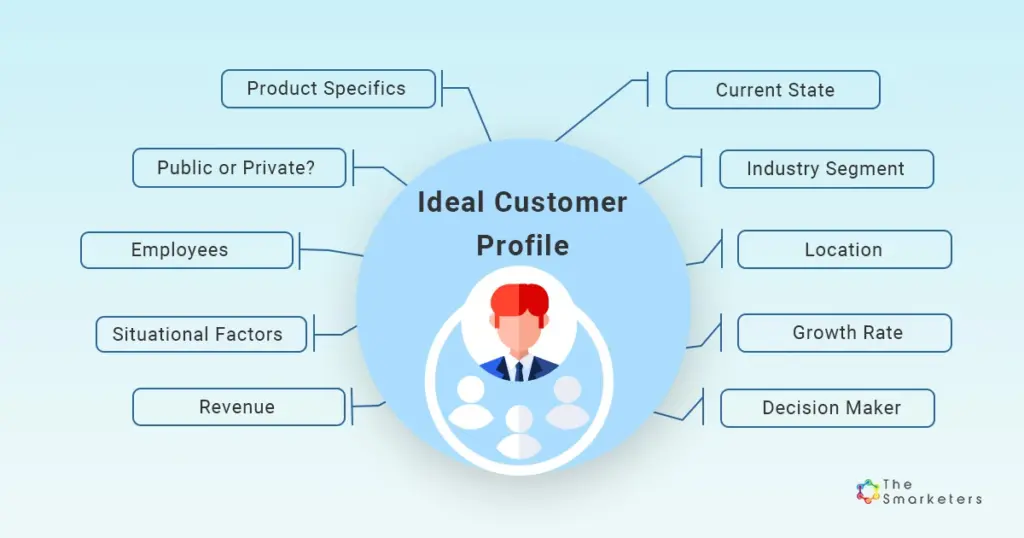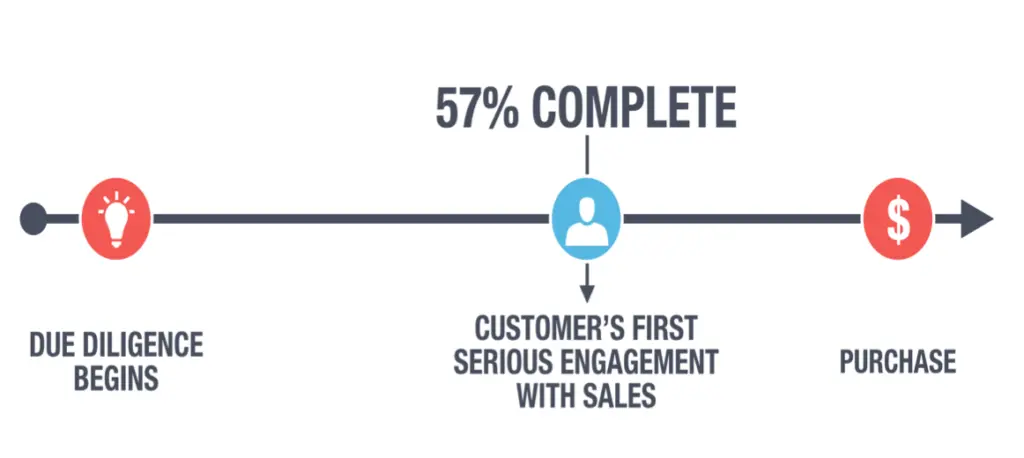5 Ways to Turn ABM Into a Revenue Driver
Does your B2B company have an account-based marketing (ABM) strategy? Even if you think the answer is no, it’s likely you’re already using ABM tactics to engage key prospects. These might include ideal customer profile development, engagement mapping, personalization, and more.
As expectations for tailored customer experiences continue to intensify, it’s becoming pressing to leverage account-based marketing to create a cohesive strategy that drives revenue and growth for your business. In this article, we’ll tell you how to do it.
Quick Takeaways:
- Account-based marketing (ABM) uses highly personalized tactics to reach high-revenue potential prospects.
- ABM can be executed at three levels: Programmatic ABM (one-to-many), ABM Lite (one-to-few) or Strategic ABM (one-to-one).
- A strong ABM strategy starts by using customer data to identify and target ideal accounts.
- Customized, high-value content is central to every modern ABM strategy.
- ABM can be used to boost specific initiatives, like product launches or new market entries.
Account-Based Marketing: What It Is and Why It Matters
Account-based marketing (ABM) is a strategic approach to B2B marketing that tailors marketing outreach and strategies to individual prospects and/or prospect groups. Rather than cast a wide net in an effort to reach as many prospects as possible, ABM aims to zero in only on those with a high likelihood of actually converting and yielding high revenue for the business.
For a long time, ABM was considered a strategy reserved for high-ticket sales or boutique companies offering customized services. But thanks to modern technology tools and marketing automation, ABM has been widely democratized. With the right tools and approaches, any company can now use it.
In most cases, companies are missing out on an opportunity by not using it in some capacity. The benefits cited by organizations currently executing ABM strategies are impactful, and include better engagement, improved win rates, higher average deal size, and improved ROI. These kinds of results are hard to ignore.

With these benefits in mind, the question for most organizations then becomes not whether or not they should implement ABM, but how they can practically do it. After all, highly individualized marketing and sales outreach requires significant time and resources (financial and otherwise).
The good news is that modern marketing technology tools make it possible to execute ABM at varied levels without ever sacrificing the quality of the strategy. These ABM levels are typically defined by three categories:
- Programmatic ABM: One-to-many engagement
- ABM Lite: One-to-few engagement
- Strategic ABM: One-to-one engagement

Depending on many different factors, like budget and resources, product or service, specific initiative, or type of prospect (among others), you can implement different approaches to ABM that meet your needs.
Now, let’s dive into some of the actionable steps to making ABM a revenue driver for your business.
5 Steps to Turn ABM Into a Revenue Driver
1. Identify High-Profit Accounts
Start by studying your customer data for profitability trends. Which types of accounts bring in the most revenue for your business? What traits define those organizations and their decision makers? Use those data points to develop ideal customer profiles and buyer personas to define your target customers.

SDRs play a big role here—they’re the ones doing much of your initial outreach, and they should be able to provide insight about which prospects are most likely to close and yield higher profit.
2. Target Similar Accounts with ABM Outreach
Now you know the types of customers and contacts from your pipeline that you want to pursue with ABM. Leverage personalized and high-touch tactics to reach out to these prospects effectively. Be sure to include new prospective accounts, the “ones that got away,” and even existing accounts that may easily be upsold or cross-sold with further marketing engagement.
Today, effective ABM outreach tactics include:
- Cold email outreach: Sending highly personalized cold email messages that demonstrate a strong understanding of the customer and their needs
- Targeted Content Marketing: Delivery of high-value content hyper-aligned with customer pain points, needs, interests, and preferences (i.e. whitepapers, ebooks, blogs, videos, etc.)
- Social Media: Using platforms like LinkedIn to share content and directly engage by commenting on posts or sending direct messages
- Custom Events and Webinars: Hosting exclusive industry- or solution-specific events or webinars to address customer challenges and facilitate deeper relationships
- Direct Mail Campaigns: Sending well-crafted and thoughtful direct mail (ex: personalized gifts, informative brochures, or invitations to special events)
- Retargeted Ads: Using digital advertising platforms to ensure that target accounts see relevant ads based on past behavior and preferences
- Personalized Video Outreach: A short, tailored video message can make a big impact. Address the recipient by name and discuss specific ways your solution can help their business
- Peer-to-Peer Outreach: Engaging decision-makers through peers in your network or industry to provide warm introductions and increase the likelihood of a positive response
Be sure to create a detailed and documented plan for ABM engagement using a combination of these tactics as prospects move through the funnel.
3. Create Personalized, High-value Content
Content is at the center of every modern B2B marketing strategy—including ABM. Prospects engage with an average of 13+ pieces of content as they make their purchase decisions, and they increasingly use it to evaluate potential providers before they reach out to marketing or sales teams. With prospects doing more than half (57%) of their research independently, content can make or break a potential lead.

With your target customers and their needs in mind, create content that can deliver value for them even before they become a paying customer. For example: A whitepaper on a pressing industry topic can help a potential client shape their strategy even before direct engagement.
Further, this kind of content establishes your company as an expert in your field, building critical trust in your organization to provide high-quality solutions.
4. Use Data-Driven Email Marketing
Email is a powerful tool in every marketing team’s arsenal, but it has to be personalized and data-driven in order to yield real results. To make email an effective part of your ABM strategy, leverage data insights to evaluate the kinds of messages, sending practices, and content that’s most effective.
This requires the help of data tools like your CRM and an automated email marketing platform, and it doesn’t happen overnight. Monitor important email marketing KPIs and use the insights you find to continually refine and improve your ABM email outreach strategy.
Some best practices that can help from the start:
- Create powerful subject lines
- Greet your customer or prospect by name
- Include customized, relevant content
- Send emails from a real person (not the company)
- Be timely and don’t spam
- Mention past interactions to build connection
- Offer valuable tips without hard selling
5. Use ABM to Boost Specific Initiatives
ABM can be strategically leveraged to beat specific sales goals or enhance the success of key initiatives, like new product launches or expansion into new markets. To intensify product adoption or increase the success of penetration into a new market, build a list of companies and executives who meet your ideal customer criteria.
How Televerde Can Help
Executing ABM at any level requires specific experience and expertise, and a natural knack for navigating complex conversations. One of the surest ways to succeed is to collaborate with a service provider that has extensive and wide-ranging ABM experience. By doing so, you can avoid common pitfalls that newer strategies often encounter, and absorb expert advice at every step.
To learn more about how Televerde can help you implement an ABM strategy that drives growth for your business, get in touch with our team today.


